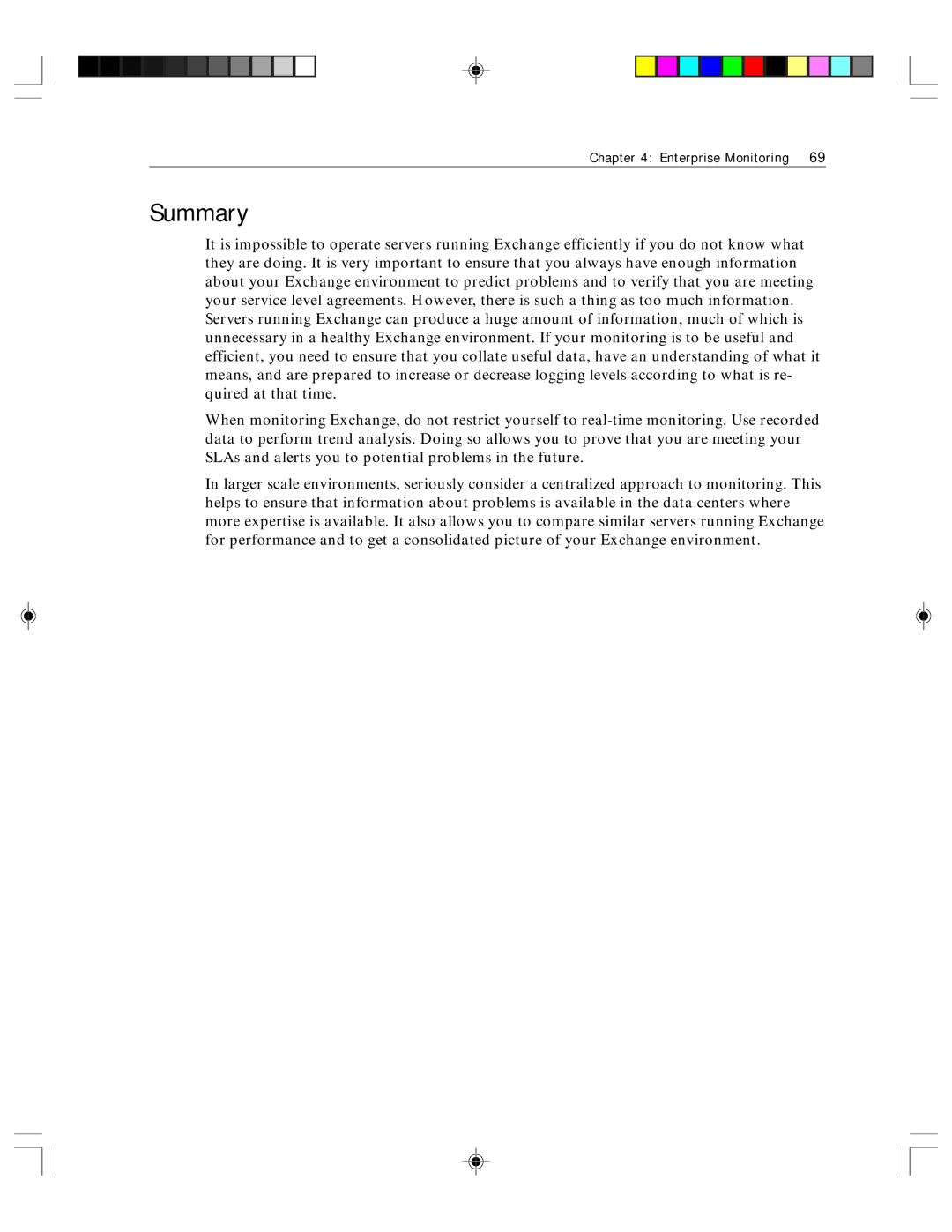
Chapter 4: Enterprise Monitoring | 69 |
Summary
It is impossible to operate servers running Exchange efficiently if you do not know what they are doing. It is very important to ensure that you always have enough information about your Exchange environment to predict problems and to verify that you are meeting your service level agreements. However, there is such a thing as too much information. Servers running Exchange can produce a huge amount of information, much of which is unnecessary in a healthy Exchange environment. If your monitoring is to be useful and efficient, you need to ensure that you collate useful data, have an understanding of what it means, and are prepared to increase or decrease logging levels according to what is re- quired at that time.
When monitoring Exchange, do not restrict yourself to
In larger scale environments, seriously consider a centralized approach to monitoring. This helps to ensure that information about problems is available in the data centers where more expertise is available. It also allows you to compare similar servers running Exchange for performance and to get a consolidated picture of your Exchange environment.
